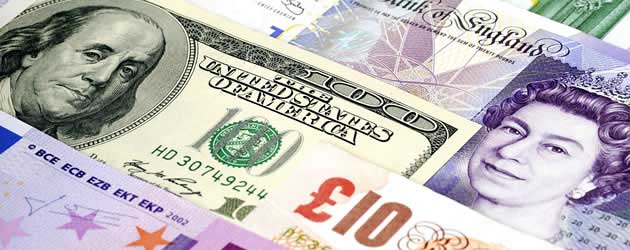
The Pound to US Dollar exchange rate (GBP/USD) slid lower by a negligible 10 pips last night as the Federal Reserve released its Beige Book of economic anecdotes. The Fed noted that consumer spending ticked higher during the surveyed period of July to August, but that lending activity dropped slightly:
“Consumer spending rose in most districts, reflecting, in part, strong demand for automobiles and housing-related goods”.
GBP/USD declined from around 1.5640 to 1.5630, having earlier touched a fortnightly high of 1.5644. Another outlandishly strong UK Service Sector score supported the Pound yesterday. August’s Services PMI struck a fresh 6-year high of 60.5 as New Business expanded at the fastest rate since May 1997. The latest figure supports the prevalent view held by markets at the moment that surging British growth figures will force the Bank of England to raise interest rates earlier-than-expected.
The BoE currently expects to keep rates at the current record low at least until 2016. Governor Mark Carney’s forward guidance policy stipulates that rates will not be raised until Unemployment, currently at 7.8%, falls to 7.0% and according to the Bank’s Unemployment projections this will not happen until mid 2016. But with third quarter UK GDP set to double the BoE’s forecast, at over 1.0%, it is growing increasingly likely that the UK Central Bank’s hand will be forced and a rate hike will be needed slightly sooner. This interest rate speculation is driving UK yields higher, which is subsequently making the Pound more attractive to speculative traders.
Later today both the Bank of England and the European Central Bank are due to announce their policy decisions for September. Neither Central Bank is likely to make any changes, which theoretically should support their respective currencies.
The ECB decision carries the threat of more market volatility than the BoE, as concerns over weak credit growth could potentially bring about another bout of non-standard monetary policy. With credit levels currently at the lowest level since 2011, when the ECB attempted to boost liquidity with its LTRO scheme, it is possible that the European Central Bank could unleash a similar scheme this time out. Under this circumstance the Euro would be liable to decline against both the Pound and the US Dollar.
Later on in the day US ADP Employment and Initial Jobless Claims figures will most likely be taken as a proxy for tomorrow’s highly anticipated US Non-farm Payrolls report. If this afternoon’s US labour market figures exceed expectations then traders are likely to position themselves for further US Dollar gains. Although Fed taper speculation has been going on for so long now, and most investors have already priced-in a slight reduction in September, the ‘Greenback’ is still likely to rally in the immediate aftermath of a strong Non-farm Payrolls report.

Comments are closed.